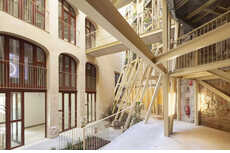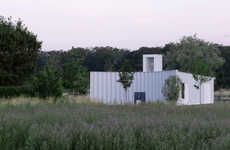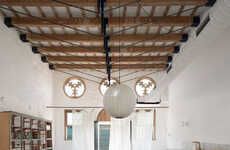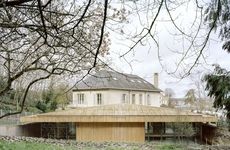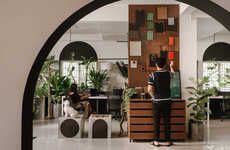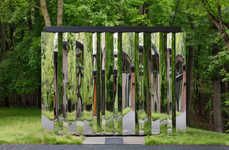
The Gon-Gar Workshop Combines Industry with Office Space
Joey Haar — June 4, 2018 — Art & Design
References: archdaily
Whether in densely packed urban areas or tiny rural towns, combining the functionality of buildings is a key method for reducing the environmental impact that people have in a given region, and the new Gon-Gar Workshop refurbishment adheres to that ethos. Though the building is located in the town of Benissanet in Tarragona, Spain, which has a population of barely 1,200, it still combines uses to reduce its carbon footprint.
The Gon-Gar Workshop fulfills duel purposes. On the one hand, it serves as the mechanical workshop and exhibition area for agricultural equipment. There's administration that runs in tandem with these industrial tasks, and rather than building out a separate housing for those office tasks, NUA arquitectures, the team behind the project, opted to have the office space directly attached to the original building.
Image Credit: Adria Goula
The Gon-Gar Workshop fulfills duel purposes. On the one hand, it serves as the mechanical workshop and exhibition area for agricultural equipment. There's administration that runs in tandem with these industrial tasks, and rather than building out a separate housing for those office tasks, NUA arquitectures, the team behind the project, opted to have the office space directly attached to the original building.
Image Credit: Adria Goula
Trend Themes
1. Triangulated Industrial Workshops - The trend of combining multiple functionalities in buildings to reduce environmental impact presents disruptive innovation opportunities in construction and architecture.
2. Functionality Integration - The trend of integrating different functions within a single space creates opportunities for disruptive innovations such as multi-purpose workspaces and hybrid buildings.
3. Carbon Footprint Reduction - The trend of reducing carbon footprints through combined uses in buildings opens up opportunities for disruptive innovations in sustainable design and resource optimization.
Industry Implications
1. Construction - The construction industry can explore disruptive innovation opportunities by embracing the trend of combining multiple functionalities in buildings to create more sustainable and efficient structures.
2. Architecture - The architecture industry can leverage the trend of functionality integration to design innovative spaces that cater to diverse needs, offering a more efficient and flexible built environment.
3. Sustainable Design - The trend of reducing carbon footprints through combined uses in buildings presents disruptive innovation opportunities for the sustainable design industry to create eco-friendly and resource-efficient spaces.
2.3
Score
Popularity
Activity
Freshness





